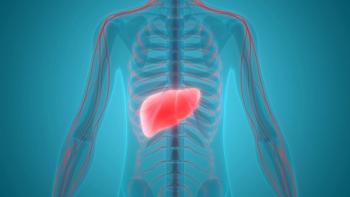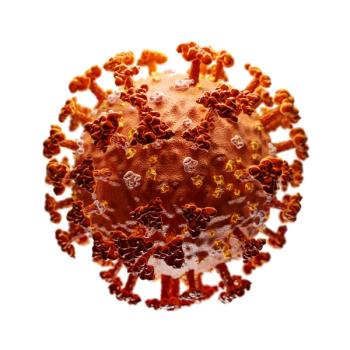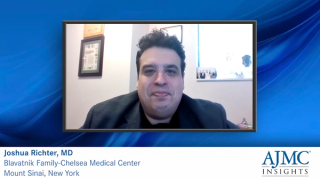
Clinical
Latest News

Latest Videos

CME Content
More News

New data from the CREDENCE trial shows that the sodium glucose co-transporter 2 (SGLT2) inhibitor canagliflozin may reduce hyperkalemia risk in people with type 2 diabetes and chronic kidney disease who are using RAAS inhibitors.

Sanofi and Regeneron had previously announced an overall survival advantage of 29% over chemotherapy alone; the combination also had a progression-free survival benefit of 46%.

A review of current data identified areas of progress in Bruton tyrosine kinase (BTK) inhibition for patients with chronic lymphocytic leukemia (CLL).

Unlike the success seen in other cancer types, biomarker-driven treatment advances in gastroesophageal adenocarcinoma (GEA) have been hindered by its genomic heterogeneity. A significant proportion of patients also develop resistant subclones through selective pressure, resulting in disease progression.

Patients who are treated with direct-acting antivirals to treat hepatitis C virus (HCV) are still at risk of developing hepatocellular carcinoma (HCC).

The prespecified analysis of DESTINY-Breast03 opened a Presidential Symposium September 18, during the European Society of Medical Oncology (ESMO) 2021 Virtual Congress, with the study’s lead author predicting a new standard of care and a commentator calling the results “startling.”

Clinicians are finding that there really is no basis to recommend probiotics for patients with Clostridioides difficile infection, that instead they may cause harm, said Colleen R. Kelly, MD, FACG, gastroenterologist and associate professor of medicine at The Warren Alpert Medical School of Brown University.

The data offer novel insights, as comparable data on the drug class is scarce despite 2 JAK inhibitors being approved for use in myelofibrosis and others showing promise.

Complications of note in patients with myeloproliferative neoplasm (MPNs) include ischemic stroke, intracerebral and subarachnoid hemorrhage, microbleeds, posterior reversible encephalopathy syndrome, and dural sinus and cerebral vein thrombosis.

A pair of surveys found that there are knowledge and practice gaps preventing earlier diagnoses of spinal muscular atrophy (SMA) in infants and toddlers.

The advisory committee voted against COVID-19 vaccine booster shots for individuals 16 years and older, but unanimously voted for booster shots for people 65 years and older or who are at high risk of severe COVID-19.

At the 10th anniversary meeting of Patient-Centered Oncology Care®, sessions will cover reducing disparities in cancer care, bringing clinical trials closer to the community, and expanding the scope of what the term "precision medicine" means in cancer care.

This study found that switching from a conventional troponin assay to a high-sensitivity troponin assay resulted in changes to diagnosis patterns and stress testing trends.

Five case reports suggested the anti-BAFF monoclonal antibody was effective at reducing disease activity scores for adults who have neuropsychiatric systemic lupus erythematosus (NPSLE).

Investigators examined medical records spanning 3 decades to look at the effect of poorly differentiated tumor size on outcomes in survival in hepatocellular carcinoma (HCC).

This pivotal phase 3 trial led to the recent approval of lonapegsomatropin for growth hormone deficiency.

Crigler-Najjar Syndrome Type 1 is an ultra-rare disease where treatment relies on a liver transplant or full-day phototherapy sessions.

In a recent study, researchers were able to show how different evolutionary forces in aging blood stem cells impact whether or not someone develops acute myeloid leukemia (AML), offering insight into those at higher risk of the disease.

David J. Reeves, PharmD, BCOP, of Butler University discusses encouraging results from a recent trial, along with safety questions about the types of patients who weren't studied but are likely to have small cell lung cancer.

Study authors found that knowing a patient’s minimal residual disease status can help pinpoint the right multiple myeloma therapy to improve overall and progression-free survival.

Patients with BRAF-V600 mutated metastatic melanoma have new treatment options to consider, but scientists are still waiting on additional data to help choose which first-line treatments are best for which patients.

Results of a data analysis found once-daily zanubrutinib dosing in patients with mantle cell lymphoma (MCL) is safe and effective.

A case report details the presentation of systemic lupus erythematous in a young, previously healthy individual.

Two posters reviewed impairment after COVID-19 infection and the use of pulmonary rehabilitation to address the symptoms.

A review of cases using MRI with and without contrast agent found perfect or near-perfect agreement in most cases when evaluating patients with short stature for growth hormone deficiency.















































